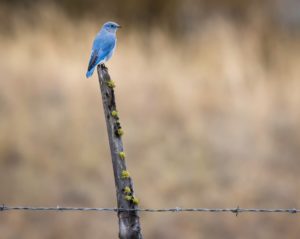Dec 19, 2022
Research probes food safety risks posed by food-borne pathogens
New research focused on wild bird species in agriculture aims to create a photographic guide to help pinpoint food safety risks posed by birds that carry and transmit food-borne pathogens.
The research is led by Daniel Karp of the University of California, Davis.

While previous research on enteric pathogens in wild birds has focused on species such as starlings and gulls that congregate in large flocks around animal feeding operations and refuse sites, Karp said little is known about the risks posed by other species, ranging from bluebirds to swallows, frequently found in farm fields or flying over them.
“We’re trying to figure out how we can co-manage these agricultural systems for food production, food safety and bird conservation at the same time,” Karp said. “It’s not like you can exclude all birds from farms. We’re trying to understand the relative risks of different species and how farm management affects those risks.”
The project is collecting fecal samples from birds caught in fields and examining them for three pathogens. The samples will also be studied to see how long pathogens survive. The results will be used to develop a holistic food safety risk assessment.
As part of work that began years ago, researchers have built a dataset with more than 100 bird species and 10,000-plus pathogen tests on around 1,000 samples.
The co-principal investigator of the project is Jeffery McGarvey of the U.S. Department of Agriculture’s Agricultural Research Service.
Researchers are working with 20 California farming operations, capturing birds without injury using mist nests, then banding and releasing them. Participating farms receive research updates.
The team is looking for campylobacter, salmonella and E. coli. In another phase of the project, researchers inoculated about 200 fecal samples from wild turkeys and Western bluebirds with E. coli in experimental field plots. The samples were placed on bare soil, plastic mulch or lettuce leaves to determine how long the pathogens survived.
“Early on, we wanted to know if the bird identity mattered or if survival just depended on the size of feces,” Karp said.
Preliminary results found both fecal size and the substrate type affected die-off, with the pathogens dying off faster in smaller masses than larger ones. Bacterial survival also was lower on soil and plastic mulch than on lettuce leaves.
Karp said the research can also help identify birds whose presence in fields is beneficial.
“Our early results found that small, insect-eating birds produce small feces, and pathogens don’t seem to survive long in these,” he said. “If we find these species present relatively low risks to food safety, then farmers might be able to take advantage of the small birds that provide them benefits while excluding the species that pose food safety risks.”









